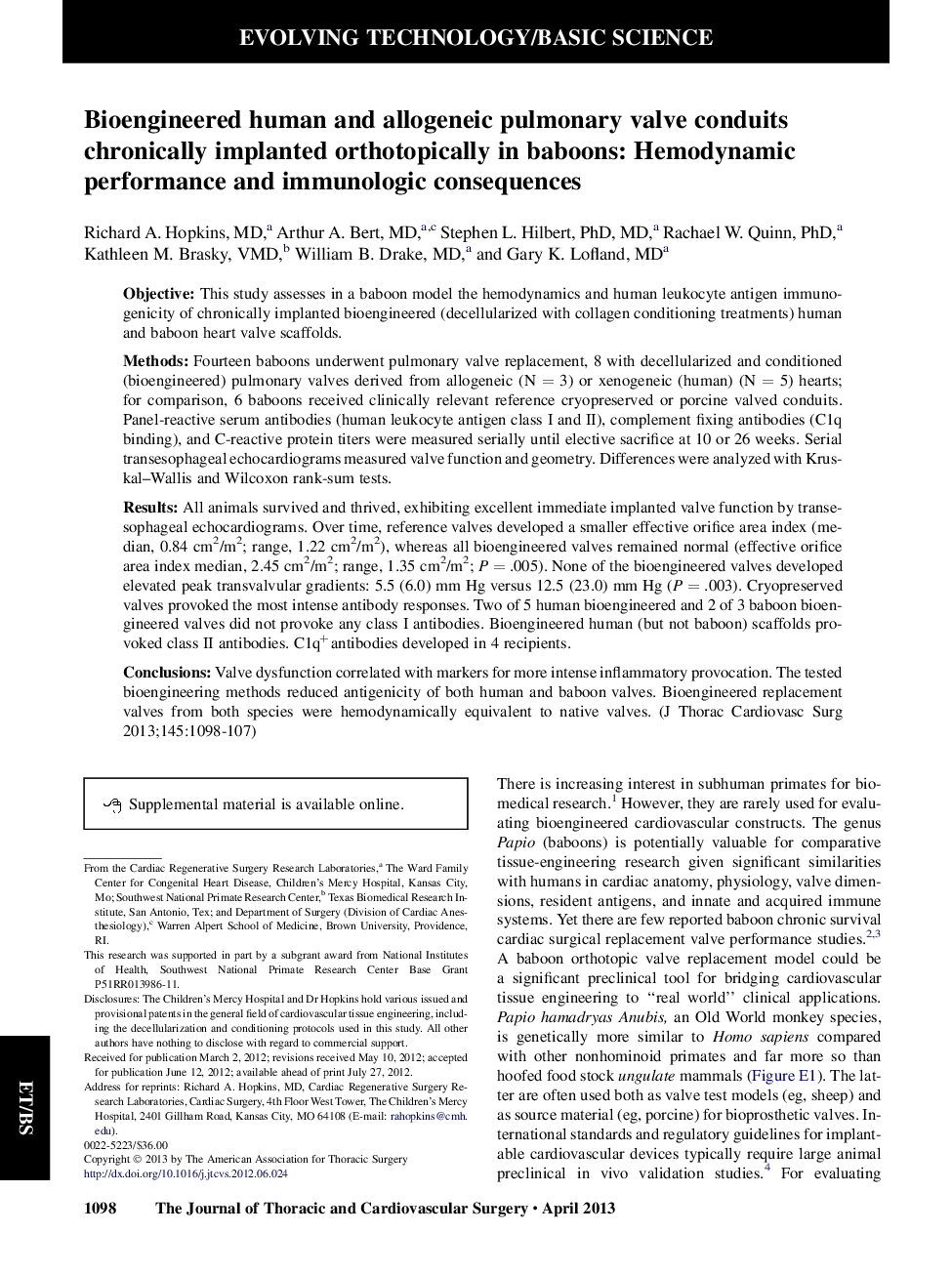| کد مقاله | کد نشریه | سال انتشار | مقاله انگلیسی | نسخه تمام متن |
|---|---|---|---|---|
| 5990037 | 1578624 | 2013 | 13 صفحه PDF | دانلود رایگان |

ObjectiveThis study assesses in a baboon model the hemodynamics and human leukocyte antigen immunogenicity of chronically implanted bioengineered (decellularized with collagen conditioning treatments) human and baboon heart valve scaffolds.MethodsFourteen baboons underwent pulmonary valve replacement, 8 with decellularized and conditioned (bioengineered) pulmonary valves derived from allogeneic (NÂ =Â 3) or xenogeneic (human) (NÂ =Â 5) hearts; for comparison, 6 baboons received clinically relevant reference cryopreserved or porcine valved conduits. Panel-reactive serum antibodies (human leukocyte antigen class I and II), complement fixing antibodies (C1q binding), and C-reactive protein titers were measured serially until elective sacrifice at 10 or 26 weeks. Serial transesophageal echocardiograms measured valve function and geometry. Differences were analyzed with Kruskal-Wallis and Wilcoxon rank-sum tests.ResultsAll animals survived and thrived, exhibiting excellent immediate implanted valve function by transesophageal echocardiograms. Over time, reference valves developed a smaller effective orifice area index (median, 0.84 cm2/m2; range, 1.22 cm2/m2), whereas all bioengineered valves remained normal (effective orifice area index median, 2.45 cm2/m2; range, 1.35 cm2/m2; PÂ =Â .005). None of the bioengineered valves developed elevated peak transvalvular gradients: 5.5 (6.0) mm Hg versus 12.5 (23.0) mm Hg (PÂ =Â .003). Cryopreserved valves provoked the most intense antibody responses. Two of 5 human bioengineered and 2 of 3 baboon bioengineered valves did not provoke any class I antibodies. Bioengineered human (but not baboon) scaffolds provoked class II antibodies. C1q+ antibodies developed in 4 recipients.ConclusionsValve dysfunction correlated with markers for more intense inflammatory provocation. The tested bioengineering methods reduced antigenicity of both human and baboon valves. Bioengineered replacement valves from both species were hemodynamically equivalent to native valves.
Journal: The Journal of Thoracic and Cardiovascular Surgery - Volume 145, Issue 4, April 2013, Pages 1098-1107.e3